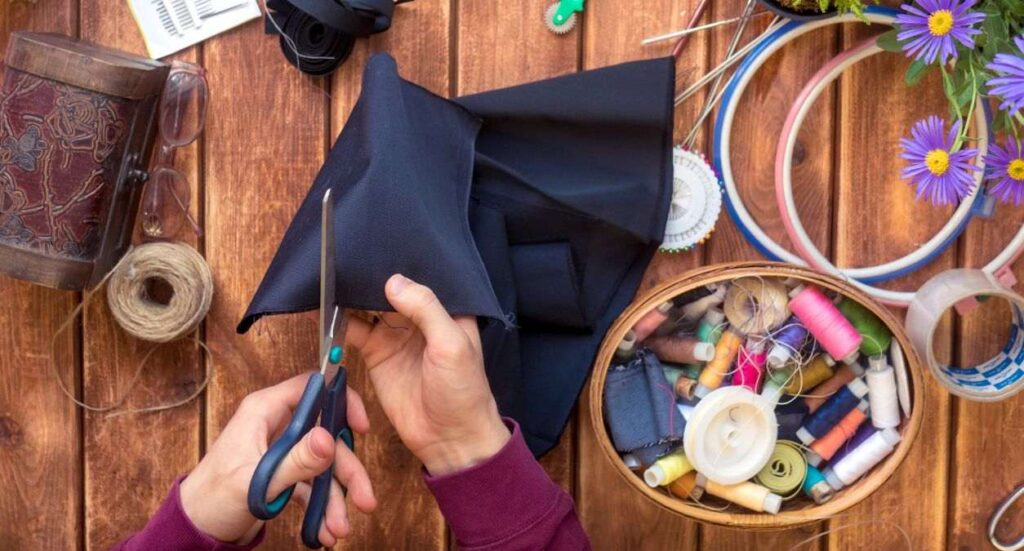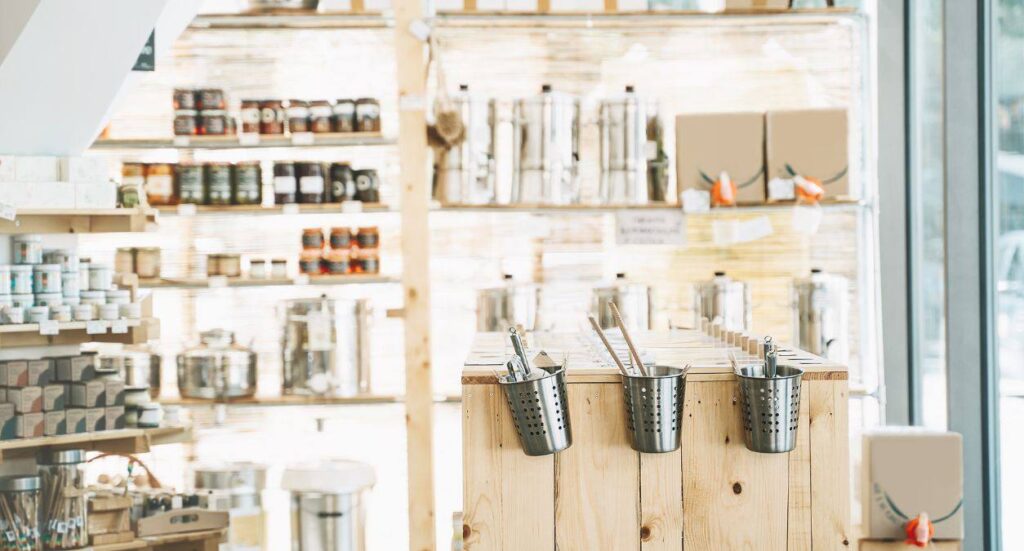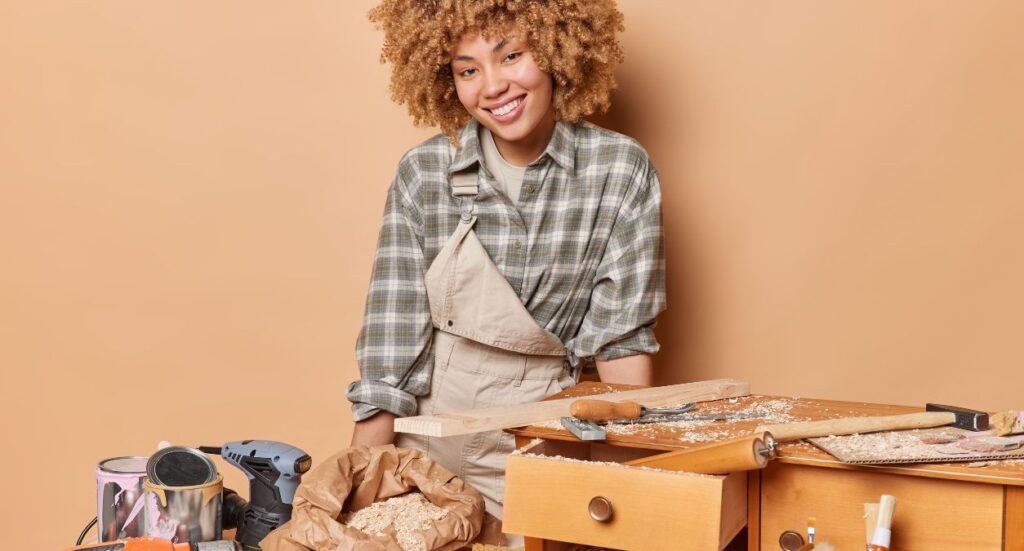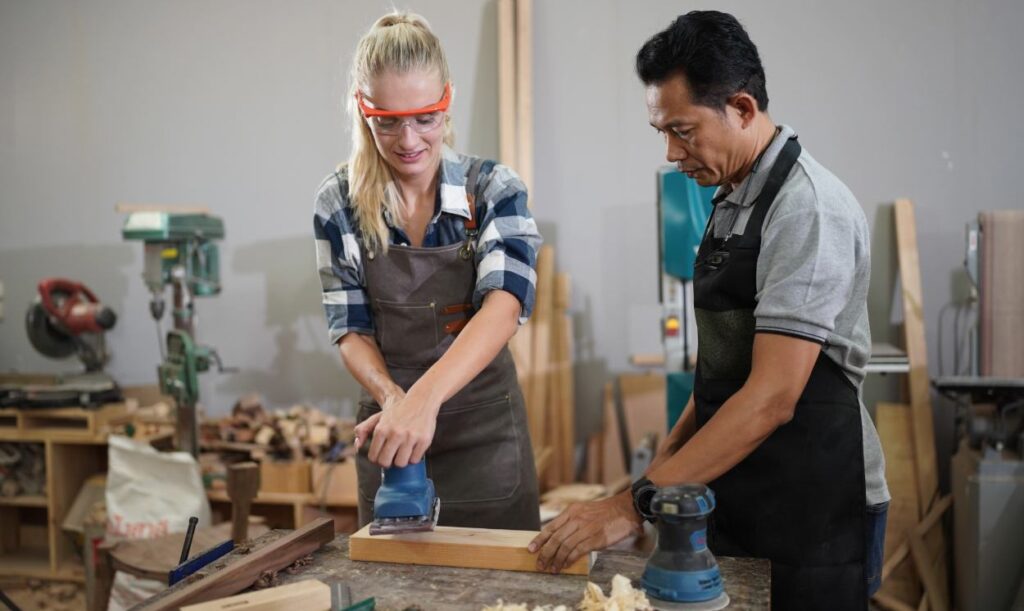Table of contents
Table of contents
If you’re a craft maker, artist or craft business owner, you’ll know that the materials you use are just as important as your creative flair. They don’t just shape the look and feel of your work – they also tell a story. In a marketplace full of mass-produced items, the right materials can give your products that all-important edge: something distinctive, meaningful, and worth paying for.
Whether you’re working with textiles, wood, clay or mixed media, sourcing unique and thoughtful materials can help you carve out your niche, reinforce your brand values, and connect with customers who care about craftsmanship, sustainability, or originality. Your choice of materials can become a key part of your business identity and even influence how customers perceive the quality and value of your work.
Of course, standing out doesn’t have to mean spending a fortune. In fact, some of the most characterful materials come from the most unexpected (and affordable) places. This guide will walk you through smart ways to source craft supplies, whether you’re just starting out or looking to grow, while keeping your costs under control and staying true to your creative vision.
Understanding the true cost of craft supplies

Let’s start with the basics – cost. While creativity might be priceless, materials certainly aren’t. A good rule of thumb is that your material costs should make up around 25% to 30% of your final retail price. This leaves room for profit while covering other expenses like labour, overheads, packaging and shipping.
Breakdown Example:
- Retail Price: £40
- Target Material Cost (30% max): £12
Watch out for hidden costs of craft materials too
- Shipping fees and customs charges
- Bulk buying minimums
- Wastage or flawed items
- Storage space
Keeping detailed records of your material costs will help you adjust pricing and spot areas for saving.
Defining your Unique Selling Proposition (USP)

Your USP is what sets your work apart, and often, your materials are at the heart of that story.
Consider these USP angles:
- Sustainability: Recycled, organic or biodegradable materials.
- Local sourcing: Supporting nearby businesses and reducing transport emissions.
- Rare or niche materials: Vintage fabrics, exotic woods, or handmade papers.
- Cultural or historical connections: Using traditional methods or heritage materials.
Your sourcing choices can strengthen your brand. For example, a jewellery maker using Cornish sea glass or a weaver using British wool instantly tells a story customers can connect with.
Smart sourcing options for unique materials

Finding the right materials for your craft doesn’t have to mean spending a fortune or compromising on your values. In fact, some of the most characterful, sustainable, and budget-friendly materials come from unexpected places.
Whether you’re eco-conscious, working with a tight budget, or just want something truly original, here are some smart ways to source craft materials that reflect your style and ethos.
Recycling and Upcycling
Reusing old materials isn’t just cost-effective, it’s also kinder to the planet and gives your work a one-of-a-kind touch. Charity shops, car boot sales, and jumble sales can be brilliant for finding fabrics, buttons, vintage jewellery, and ceramics. Old clothes, curtains, and tablecloths can be transformed into patchwork, soft furnishings, or even textile art. Keep an eye out for second-hand tools and equipment too, you might snag something useful for a fraction of the retail price.
Freecycle and Facebook Marketplace
These platforms are goldmines for crafters on a budget. Many people give away leftover DIY supplies like wood offcuts, yarn, paint, or household items that can be repurposed. With a bit of creativity, an old lampshade or set of drawers can become your next best-selling piece. Local “buy nothing” groups and online community boards are also worth checking regularly, you never know what might pop up.
Community re-use centres and salvage yards
If you’re working with wood, metal, or doing mixed-media or furniture-based crafts, visit a community reuse centre or architectural salvage yard. These places often have reclaimed materials full of character, think old doors, floorboards, ironmongery, and even vintage tiles. You’ll save money and give old materials a new lease of life.
Sourcing from nature (ethically)
Natural materials like driftwood, stones, feathers, pressed flowers, and seed pods can add texture and authenticity to your work. But always collect responsibly. Some natural elements are protected, and there are rules about what you can legally take from beaches, woodlands, and parks.
Check with your local council or wildlife authority before collecting, especially in conservation areas or Sites of Special Scientific Interest (SSSIs). Once collected, dry and treat any natural materials properly to prevent mould, bugs, or decay.
Trusted suppliers for quality and consistency
When you need specific materials in bulk or consistent quality – especially for selling professionally – it can be worth investing in reputable suppliers. Look for small or independent suppliers who are transparent about their sourcing and offer options like fair trade, recycled, or organic goods.
Don’t be afraid to ask questions: Where are the materials from? Are they ethically made or sustainably sourced? Some niche suppliers will even offer custom colourways or small batch runs, giving your products that extra-special feel.
Working with trusted suppliers doesn’t mean you have to lose your uniqueness. In fact, mixing a base of reliable, high-quality materials with found or upcycled accents can help keep your products both consistent and full of personality.
Wholesale vs. Retail Markets

One of the key decisions you’ll face when sourcing materials is whether to buy wholesale or stick to retail suppliers. Both options have their benefits, and the best choice often depends on where you are in your business journey. Here’s a closer look at each approach to help you weigh up what works best for you.
Wholesale Sourcing
Pros:
- Cheaper per unit: Buying in bulk usually means a much lower cost per item, which can significantly improve your profit margins once you’re producing and selling at volume.
- Ideal for scaling up: If you’re starting to receive regular orders or planning to sell in larger quantities (such as at markets or wholesale to shops), wholesale makes more sense.
- Greater variety from specialist suppliers: Many wholesalers offer wider selections, especially in niche areas like eco-friendly materials, custom colours, or specific craft industries (like jewellery-making or textile design).
Cons:
- Larger upfront investment: You’ll often need to place minimum orders, which can mean spending more money upfront, sometimes before you’ve fully tested your product.
- Storage space required: Bulk buying means you’ll need room to store your materials safely and in good condition, something to consider if you’re working from home.
- May require business registration: Some wholesalers only sell to registered businesses or ask for a VAT number, so you may need to be formally set up before accessing their stock.
Retail Sourcing
Pros:
- Easy to get started: You can simply buy what you need, when you need it, from online craft stores, high street shops, or even supermarkets and hobby retailers.
- Buy in small quantities: Great for experimenting with new designs or materials without committing to large amounts.
- Perfect for testing: If you’re still figuring out your product line or pricing, retail allows for flexibility and lower risk.
Cons:
- Higher cost per item: Retail pricing can eat into your profit margins, especially once you begin making more frequent or larger batches.
- Limited availability: Retail stock can sell out quickly or be seasonal, which could be an issue if you’re trying to maintain a consistent product range.
Start small with retail while you’re still testing your products and finding your niche. Once you know what sells, and how much you’re likely to produce, consider moving to wholesale for core materials. Many successful crafters use a mix of both, buying basic supplies in bulk while sourcing special items or seasonal touches from retail or second-hand sources.
By gradually shifting to wholesale as demand grows, you can maintain quality, reduce costs, and scale more sustainably, all without taking on too much risk too soon.
Popular providers for UK craft businesses

Here are some great places to look, whether you’re sourcing online or popping into a shop, these popular craft material providers can facilitate your creations:
Online Marketplaces
Etsy UK (supplies category): Good for unique tools and handmade materials.
eBay: Ideal for bulk buying or finding discontinued items.
Vinted: Brilliant for second-hand fabrics and clothes to upcycle.
Wholesale Platforms
Faire: Connects small brands with wholesale buyers.
The Wholesaler UK: Directory of British suppliers.
SupplyCompass: Focuses on ethical and sustainable sourcing.
In-Store and Specialist Shops
Hobbycraft: Good general supplies.
Fred Aldous (Manchester/Leeds): Art and design supplies.
Cass Art: Specialist for fine art materials.
Whaleys (Bradford) Ltd: Textile specialists.
Yandles (Somerset): Woodworking materials and tools.
Regulations and Safety Considerations
Before you start selling your handmade products, it’s important to understand the basic safety and legal guidelines that come with running a craft business, especially if you’re using second-hand, natural, or imported materials. Staying informed will help protect both you and your customers and build trust in your brand from day one.
Health & Safety Tips
Clean and treat second-hand or natural materials.
- Avoid using any reclaimed items with signs of pests, mould, or chemical exposure.
- Ventilation and PPE (gloves, masks) are vital when working with woods, resins or paints.
Legal Considerations
Certain natural items (like shells, bird feathers or driftwood) may be protected.
If importing materials, check UK regulations on customs and banned substances.
Be transparent in your product descriptions, especially if using second-hand or mixed materials.
Tips for efficient and ethical sourcing
- Build long-term relationships with suppliers for better deals.
- Join maker communities and forums to share leads.
- Visit local trade fairs and open studios.
- Keep a sourcing log to track costs, quality and supplier reliability.
- Stay on top of trends in materials and environmental standards.
Sourcing materials isn’t just about finding what you need, it’s about discovering what makes your craft unique. Whether you’re passionate about sustainability, inspired by local landscapes, or drawn to unusual textures and stories, your supplies are part of the creative journey. Be curious, be conscious, and most of all, enjoy the hunt!
Get Crafters Insurance from Protectivity
*Disclaimer – This blog has been created as general information and should not be taken as advice. Make sure you have the correct level of insurance for your requirements and always review policy documentation. Information is factually accurate at the time of publishing but may have become out of date.
Last updated by

















